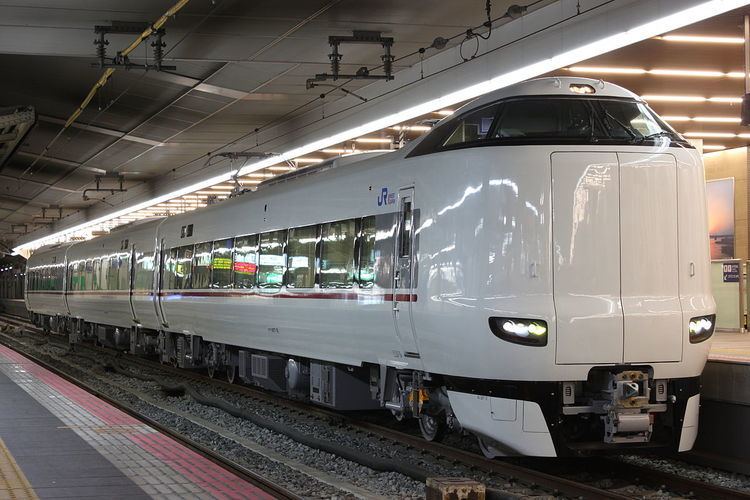Current operator(s) JR West, Willer Trains | First service 1965 Line used Sanin Main Line | |
 | ||
Rolling stock 287 series EMU, Willer Trains KTR8000 series DMU | ||
The Hashidate (はしだて) is a limited express train service operated by West Japan Railway Company (JR West) in Japan. One of the services making up JR West's "Big X Network", it connects Kyoto Station, Amanohashidate Station and Toyooka Station via the Sanin Main Line and Kyoto Tango Railway's Miyafuku Line and Miyatoyo (Miyazu) Line. The color associated with the service is red.
Contents
Stations served
Kyoto - Nijō - Kameoka - Sonobe - Ayabe - Fukuchiyama - Ōe - Miyazu - Amanohashidate - Nodagawa - Tango-Ōmiya - Mineyama - Amino - Yūhigaura-Kitsu-onsen - Kumihama - Toyooka
Rolling stock
Services are operated by 287 series electric multiple unit (EMU) trains based at Fukuchiyama Depot, and KTR8000 series DMUs from Willer Trains. 289 series EMUs converted from former dual-voltage 683 series trainsets were introduced on Hashidate services from 31 October 2015, replacing the remaining JNR-era 381 series trains. After the resetting of the rolling stock in 26 March 2016, all 289 series EMUs were changed to 287 series EMUs.
Former
183 series EMUs were formerly used on some services, but were withdrawn by the start of the revised timetable on 16 March 2013.
381 series EMUs used on Hashidate services were withdrawn following the final day of operations on 30 October 2015.
History
The Hashidate first appeared in 1965 as a semi-express connecting Osaka and Amanohashidate via the Fukuchiyama Line, Sanin Main Line, and Miyazu Line. It became an express service in 1966. In 1968, Hashidate services were merged into Tamba services. Until March 11, 2011, the Monju and Tango Discovery were most like the original Hashidate service. From 1982 until 1992, the Hashidate was an express service connecting Fukui and Amanohashidate via the Obama Line and Miyazu Line. Two other services, the Wakasa and Taisha, had service areas that overlapped with the Hashidate.
